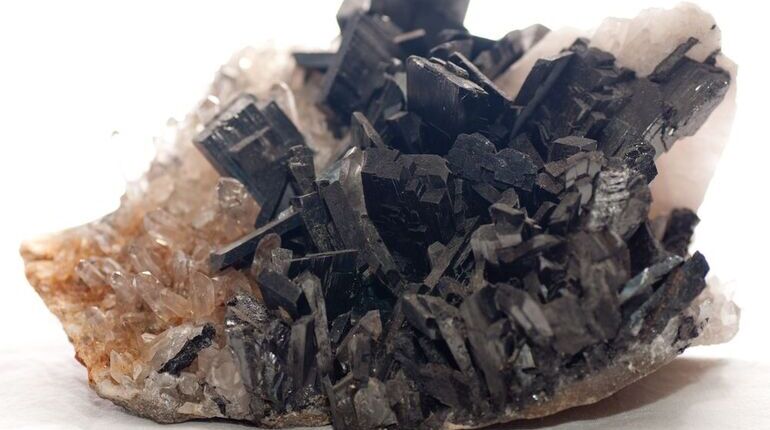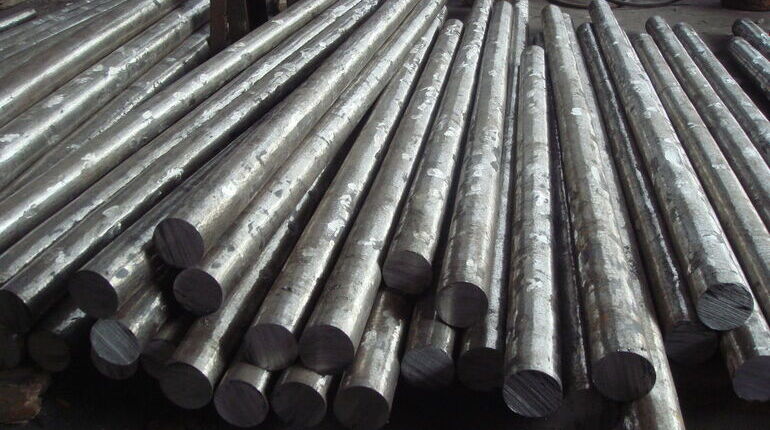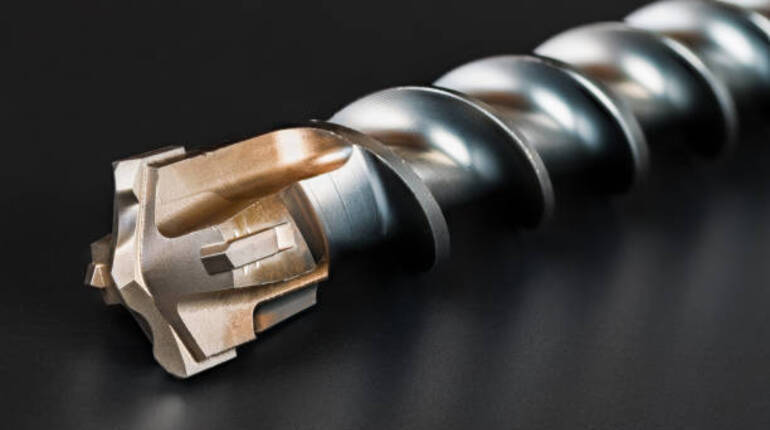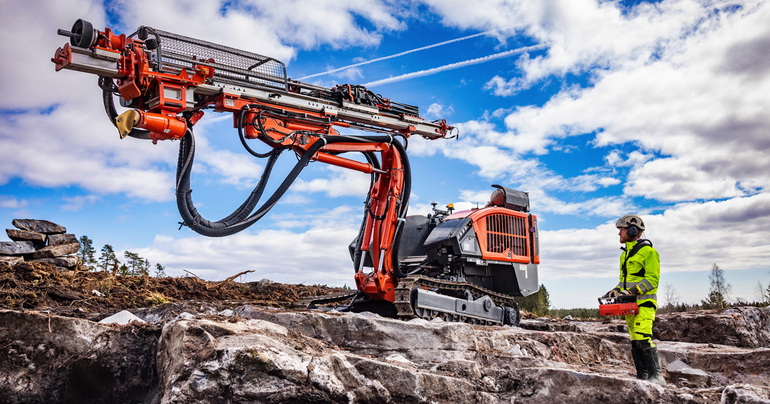
A Guide To Using Tungsten Steel In Mining Equipment
Mining is a complex and intricate process that requires the use of specialized equipment and materials. Tungsten steel has been used in mining for many years due to its durability and corrosion resistance.
In this article, an overview of tungsten steel will be presented, along with a guide to how it can be used in mining equipment. The guide includes information on the properties of tungsten steel, the advantages it offers, and the types of applications it can be used for.
Ultimately, readers will gain an understanding of the role tungsten steel plays in mining operations and why it is so important. With this knowledge, readers can make informed decisions about which materials to use when creating or maintaining their own mining equipment.
What Is Tungsten Steel?

Tungsten steel, also known as tool steel or high-speed steel, is a type of alloyed steel that contains tungsten and other elements. This type of steel is used in the production of tools and components that require high levels of wear resistance and heat treating.
It has superior properties compared to regular carbon steels due to its higher hardness, strength, and wear resistance. Tungsten steel is mainly used for cutting tools such as drill bits, lathe tools, milling cutters and saw blades.
Tungsten steel provides higher hardness than other steels at elevated temperatures due to its high melting point. This makes it ideal for use in applications where heat treating is required.
Its superior wear resistance makes it suitable for use in mining equipment such as crushers and grinders which are prone to experiencing heavy wear from contact with abrasive materials. In addition, it has excellent corrosion resistance which increases its longevity and performance in harsh environments.
Properties Of Tungsten Steel
Tungsten steel is a material that for centuries has been used to craft tools and weapons. But recently, it has become increasingly popular for use in mining equipment.
Its many properties have made it the perfect choice for anyone looking to increase efficiency and productivity when mining. Tungsten steel is incredibly strong and hard which makes it ideal for mining tools, as its hardness levels are second to none.
It also offers excellent heat resistance, meaning that it can be used in high temperature environments without any damage occurring to the material itself. In addition, tungsten steel's corrosion resistance means that even after long periods of use, its quality will remain intact.
These properties of tungsten steel make it an invaluable resource when it comes to mining operations: providing an effective and efficient solution while still being able to withstand the rigours of the environment. For these reasons, tungsten steel is quickly becoming the material of choice when it comes to constructing mining equipment.
Advantages Of Using Tungsten Steel
Tungsten steel is known for its durability and strength, making it a popular choice for use in mining equipment.
Research has shown that tungsten steel is up to five times harder than regular steel, allowing it to last longer and resist wear and tear in mining operations.
The strength of tungsten steel also makes it ideal for use in mining equipment, as it can withstand heavier loads and more intense forces than regular steel.
Finally, tungsten steel is highly resistant to corrosion, making it an excellent choice for use in environments where it is exposed to harsh conditions or moisture.
Durability
The use of tungsten steel in mining equipment offers a great advantage due to its durability. This material is able to withstand heavy wear and tear, making it ideal for applications that involve high levels of abrasion.
Tungsten steel is also highly resistant to corrosion and temperature changes, making it an ideal choice for operations in extreme temperatures and environments. In addition to its durability, tungsten steel is also cost-effective compared to other materials used in mining equipment.
The long life span of tungsten steel equipment means less frequent maintenance which helps keep costs down over time. Furthermore, the use of tungsten steel can help improve safety measures as the material does not easily break or corrode under pressure, reducing the chances of accidents occurring due to faulty machinery.
As such, the use of tungsten steel can be beneficial for both cost effectiveness and safety measures in mining operations.
Strength
The strength of tungsten steel is one of its main advantages for applications in mining equipment.
To ensure that the material can withstand the heavy wear and tear, durability testing must be conducted to assess its strength.
This type of testing involves subjecting the material to extreme temperatures, shock, and abrasion to test its ability to resist damage from these sources.
The results of these tests can be used to design safety protocols which incorporate the use of tungsten steel into their operations.
As such, this material is capable of providing a greater degree of safety against accidents due to faulty machinery.
In addition, the strength offered by tungsten steel also increases its life span, meaning less frequent maintenance and cost savings in the long run.
Applications Of Tungsten Steel In Mining
Tungsten steel is widely used in mining equipment due to its cost efficiency and wear resistance. Its high strength-to-weight ratio makes it an ideal material for use in drill bits, tunnel support systems, and underground mining machinery.
Tungsten steel is also resistant to corrosion, making it well-suited for use in harsh environments with extreme temperatures and humidity levels. Due to its durability, tungsten steel has become a popular choice for mining operations that require long-term reliability.
The material can handle the repeated impacts of drilling operations, as well as the stress associated with transporting heavy loads of ore or other materials. Additionally, tungsten steel can be reshaped and reused multiple times without compromising its structural integrity or performance capabilities.
This makes it an economical option for miners looking to extend their equipment’s lifespan and maximize their return on investment.
Choosing The Right Tungsten Steel

Tungsten steel is a type of alloy steel containing tungsten, making it highly durable and resistant to wear and tear. Its strength and hardness make it ideal for use in mining equipment, as it is able to withstand high levels of pressure and friction.
Additionally, tungsten steel can be alloyed with a selection of other metals, allowing for a wide range of design possibilities. Cost is an important factor to consider when choosing tungsten steel for mining equipment, as some alloys may be more expensive to produce than others. However, the long-term savings in maintenance and repair costs may outweigh the initial expense.
The choice of tungsten steel should also be based on the specific application and any potential environmental impacts associated with its use. Lastly, the selection process should consider safety and health standards, as well as any potential hazards related to the use of tungsten steel.
Types Of Tungsten Steel
Tungsten steel is a type of alloy that is used in mining operations due to its impressive heat and wear resistance properties.
It is an ideal choice for mining equipment that requires durable components as it remains stable and resistant to high temperatures and abrasive wear.
Tungsten steel is also non-magnetic, meaning that it can be used in areas with a high magnetic field without any negative effects on the equipment.
The most common types of tungsten steel used in mining operations are tungsten carbide, molybdenum alloy, and chromium alloy.
Tungsten carbide is the strongest material available and offers excellent heat resistance while molybdenum alloy provides good wear resistance.
Chromium alloys provide good corrosion resistance with high levels of both heat and wear resistance.
Each type has its own unique benefits and characteristics, making them suitable for various applications within the mining industry.
Ultimately, choosing the right tungsten steel for a specific application requires careful consideration of the environmental conditions, operational requirements, and budget constraints.
Benefits Of Tungsten Steel
The use of tungsten steel in the mining industry offers numerous benefits.
It is extremely durable, resistant to high temperatures and abrasive wear, and non-magnetic.
This makes it an ideal choice for mining operations that require cutting edge equipment that can withstand harsh conditions without breaking down or becoming unreliable.
Additionally, the cost benefits of using tungsten steel are also significant as it does not require frequent replacement and can last for many years with minimal maintenance.
This allows for more efficient operations as well as a greater return on investment over time.
Cost Considerations
When selecting the right tungsten steel for an operation, cost considerations are paramount.
Although tungsten steel is more expensive than traditional metals, its long-term durability and resistance to abrasive wear make it a much more cost-effective option in the long run.
For example, when compared to other materials such as stainless steel or carbon steel, tungsten steel has a longer lifespan and requires fewer safety protocols due to its non-magnetic properties.
As such, tungsten steel can provide greater savings over time while also reducing the risk of costly downtime.
Furthermore, the high strength and weight ratio of tungsten steel makes it an ideal choice for operations that require lightweight but durable equipment.
Ultimately, these advantages offer greater value for money when selecting the best type of tungsten steel for any given application.
Working With Tungsten Steel

The right kind of tungsten steel is essential for mining equipment, as it offers superior hardness and wear resistance. It is important to understand the various types of tungsten steel available, as each type has its own unique properties that can be advantageous for different applications.
Heat treating and cutting technologies are essential for working with tungsten steel in order to achieve the desired results. Heat treating tungsten steel involves exposing it to extremely high temperatures that help harden it and improve its strength and durability. This process also helps make the surface more resistant to wear and tear.
Cutting technologies such as laser cutting, waterjet cutting, EDM machining, or plasma arc cutting can be used to shape the tungsten steel into the desired form with precision accuracy. These processes should be done by experienced professionals, who understand the importance of executing all operations correctly in order to get optimal performance from the material.
Maintaining Mining Equipment With Tungsten Steel
- Regular cleaning of tungsten steel is essential to ensure its optimal performance in the mining environment.
- Cleaning tungsten steel should be done with a soft, lint-free cloth and warm water, avoiding the use of aggressive chemical cleaners.
- To protect tungsten steel, it is advisable to apply a coating of oil or wax to the surface of the metal to prevent oxidation.
- Additionally, it is important to ensure that tungsten steel is kept dry to prevent the formation of rust and other contaminants.
Cleaning Tungsten Steel
When using tungsten steel in mining equipment, it is important to take proper steps to ensure its longevity.
To efficiently clean tungsten steel and prevent corrosion, a coating protection should be applied. This can come in the form of an oil-based or grease-type layer that protects against dirt, grime, and other damaging elements that can cause oxidation and rust.
Additionally, regularly cleaning the surface with a soft cloth will help remove any residue from use and maintain the integrity of the steel over time.
Properly maintained tungsten steel can last for years if given appropriate care and attention.
With regular maintenance, mining operations will see improved efficiency and better results with their equipment.
Protecting Tungsten Steel
The use of tungsten steel in mining equipment is becoming increasingly popular due to its strength and durability.
However, proper maintenance is necessary to extend the life of the material and protect it from corrosion.
Surface protection should be applied in the form of an oil-based or grease-type layer to prevent dirt, grime, and other damaging elements from causing oxidation and rust.
In addition, regularly cleaning the surface with a soft cloth will help get rid of any residue and ensure maximum efficiency during mining operations.
With effective maintenance strategies, tungsten steel can remain functional for many years.
The Future Of Tungsten Steel In Mining

Tungsten steel offers many potential benefits to the mining industry, from cost savings to improved safety protocols. It is an ideal material for use in mining equipment due to its high strength-to-weight ratio, as well as its excellent resistance to heat and abrasion. These qualities make it suitable for use in a wide range of mining operations, including those involving hazardous materials, extreme temperatures, and corrosive environments.
The future of tungsten steel in mining looks promising. Its durability and low maintenance costs make it an attractive option for many operators. Additionally, its environmental friendliness makes it a cost-effective solution for miners looking to reduce their carbon footprint. Furthermore, advancements in technology have allowed tungsten steel to be used in more applications than ever before, making it increasingly popular among miners around the world.
Some potential benefits of tungsten steel in the mining industry include:
- Improved safety protocols
- Cost savings through reduced maintenance costs
- Increased efficiency due to its strength and light weight
- Ability to withstand extreme temperatures and harsh conditions
- Environmental friendliness through reduced carbon footprint
The advantages of using tungsten steel in the mining industry are clear: it can help reduce costs while improving safety protocols and efficiency. In addition, its environmental friendliness makes it an attractive alternative for those who wish to lower their carbon footprint without sacrificing quality or performance. As technology continues to advance, so too will the possibilities of this versatile material in the field of mining.
Conclusion
The use of tungsten steel in mining equipment can provide numerous advantages. It is durable, resistant to wear and tear, and has a high melting point. Its strong magnetic properties make it useful for detecting ore deposits, while its malleability makes it easy to shape and forge into parts.
However, one possible objection is the initial cost of using tungsten steel. While this may be higher than other materials, over time the savings due to reduced maintenance costs and increased efficiency will more than make up for the initial investment.
In short, tungsten steel offers a viable long-term solution for mining equipment that is both reliable and cost effective.


